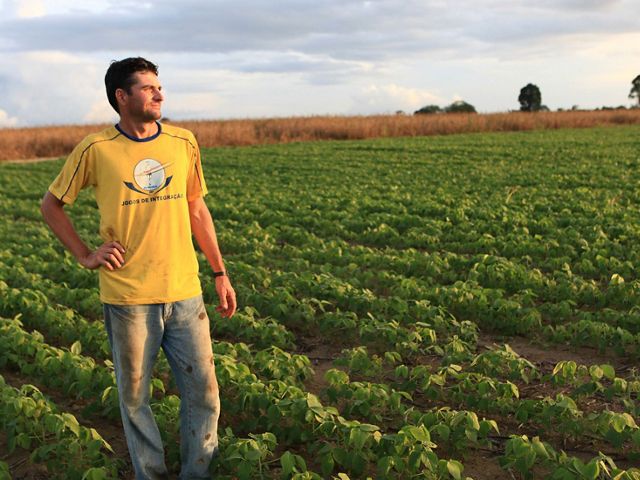
How We Work
TNC’s sustainable soy production work first started in the Southwestern state of Mato Grosso, with the Lucas do Rio Verde Legal project. In the Lucas municipality, TNC set up a computerized rural land registry known by its Portuguese acronym, CAR. This land registration mapped 100% of the municipalities’ rural land, identified existing forest cover versus agricultural areas and, in line with Brazil’s Forest Code, assisted in the environmental regularization of rural properties. Registration was essential for compliance with the forest code because now, with the registry, land is monitored from space and it's easier to tell who is in compliance or not.
The initiative in Lucas has led to the creation of other projects, such as Soja + Verde (Soy + Green) in Mato Grosso and Soja Mais Sustentável (More Sustainable Soy) in the state of Pará, both with a strong alliance of partners.
Our Goals
Now, TNC is developing its post-CAR agenda, focusing on promoting forest restoration through supply chains, training farmers in sustainable agricultural practices, and strengthening governance.
To ensure that products are produced sustainably, the Conservancy has been working with private companies to set up deforestation commitments in their supply chains. Companies such as Cargill have already pledged to set up tracking and to stop using any soy whose production causes deforestation in the tropics. Our approach is understanding business as part of the solution.
Voices From the Field
Thirty years ago, Severino João Duarte came to the city of Santarém from northeast Brazil to provide a better life for his family. The federal government encouraged him to build a farm and help grow this city along the Amazon River, and so he did.
He purchased 127 hectares—a little more than 300 acres—and began farming rice. Today, he and his son farm soy and they’re one of The Nature Conservancy’s demonstration sites for sustainable farming.
However, the road to this status has been a long one.
When Severino began farming, he cleared everything. He wasn’t informed of Brazil’s Forest Code—a law stating you must leave 80 percent in native forests—and so he did what he thought was best for his future, for his family. He cleared as much land as he could and farmed it.
With the Amazon stretching across nine countries, the federal government has a difficult time enforcing the Forest Code. Severino farmed this way for many years and escaped federal fines.
Insert The Nature Conservancy. In 2004, the Conservancy began analyzing satellite images of the Amazon Rainforest and using software to detect what is forest, what is corn, what is soy and what is pasture.
With this analysis, Conservancy staff can identify farmers who are compliant with the Forest Code and those who are not. Severino was not.
Because the Conservancy supports the Forest Code and wants to see the Amazon rainforest protected, Conservancy staff met with farmers—including Severino—explained the Forest Code and showed them how they could restore their land and become compliant.
Additionally, the Conservancy uses these images to create a “green list” of farmers. Since 2004, Cargill has relied on this “green list” to implement its commitment of only buying soy from farmers compliant with the Forest Code.

Because of this commitment from Cargill, the Conservancy can more easily convince farmers to take crops out of production and restore their land back to forest. Once they’re compliant and on the “green list,” they can sell to Cargill, which is a more reliable income source for the farmers.
The Conservancy’s partnership with Cargill and efforts to help farmers become compliant with the Forest Code are good for the rainforest and for business. Brazil produces 34 percent of the world’s soy, and its production is only expected to increase. The Conservancy believes this framework in Santarém —bringing the private sector, government and farmers together—is critical if we’re to work at the scale necessary to stop deforestation and restore the Amazon.
